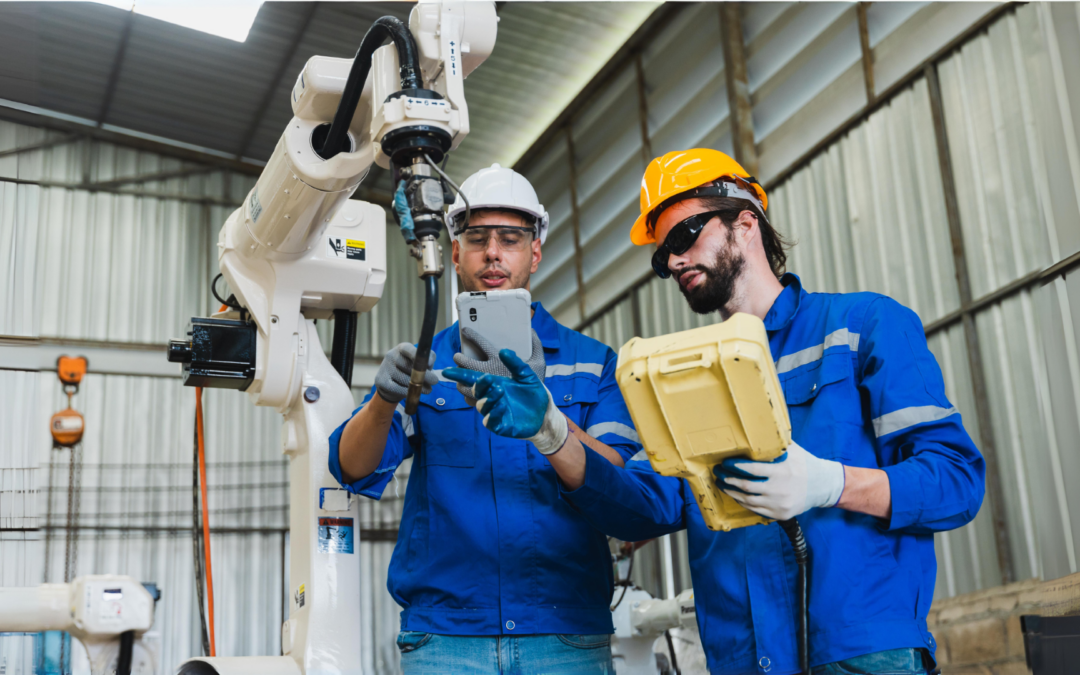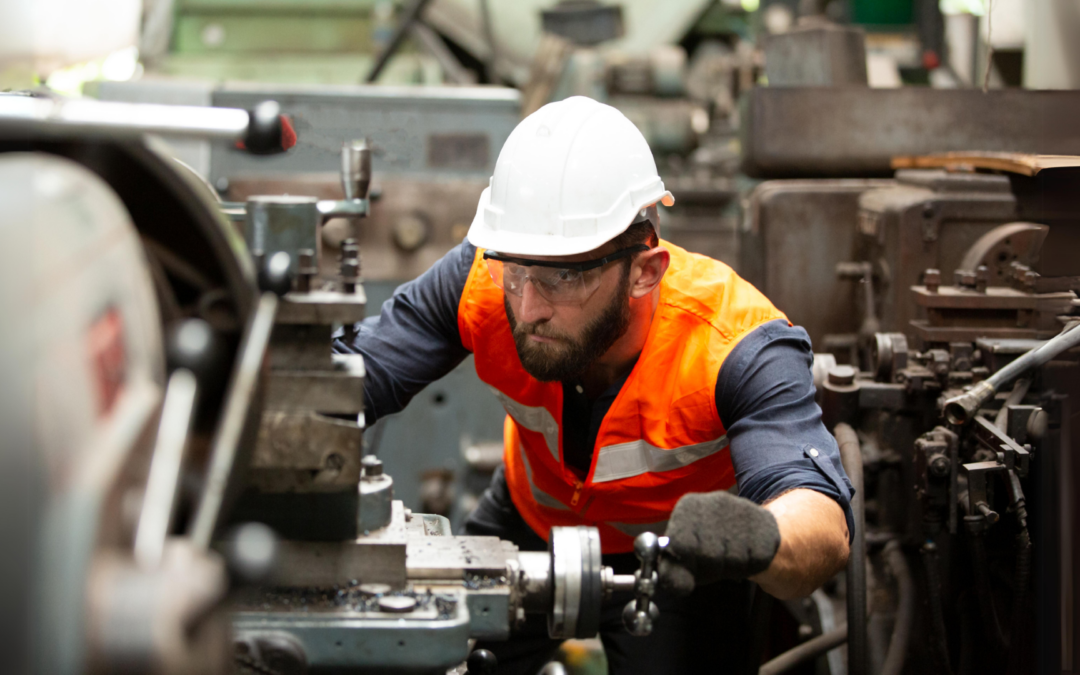Equipment is the backbone of manufacturing. Maintaining it boosts productivity, performance, and cost-effectiveness, which is why selecting the right maintenance approach is a big deal – it can make or break operations and your reputation as a manufacturing facility. Unfortunately, there is no “perfect” maintenance strategy, and deciding isn’t as straightforward as it sounds. Maintenance strategies vary in how expensive, effective, and complex they are. It might be tempting to go with the least expensive option. But the first step is understanding what each approach brings to the table so you can reap the benefits. This means answering questions like: what is a preventative maintenance strategy? How does it differ from a reactive approach? Which process is a better fit for your goals? How can you reap maintenance benefits while avoiding pitfalls, especially in high-competition, fast-moving manufacturing verticals? Let’s dive right into striking a balance and strategising maintenance to align with your business goals.
What is a Preventive Maintenance Approach?
It can be challenging to keep equipment working flawlessly at all times. Unexpected breakdowns cost billions in annual losses because of downtime and expensive emergency repairs. Fortunately, “prevention is better than cure.” Planned or preventive maintenance activities can help “prevent” such failures before they occur. 88% of manufacturing plants prefer preventive measures because they protect equipment, machine components, spare parts, and operation personnel. Preventive maintenance solves minor issues before they escalate into bigger setbacks. It prioritises proactivity through routine inspections, cleaning, lubrication, replacements, repairs and other machine-health-related tasks. Picture this: You invest in a conveyor belt but don’t employ preventive measures like oiling, regular servicing and thorough inspections. Over time, its pieces deteriorate significantly and must be replaced because they are useless. If regular monitoring and checks had been carried out, you could prolong the machine’s life and obtain expected results. Calendar-based preventive maintenance relies on a predefined, recurring preventive maintenance schedule. Depending on the machinery, timely safety, calibration, electric and mechanics checks might be carried out weekly, monthly, or annually. On the other hand, usage-based maintenance focuses on how much the asset has been used. Operators log meter readings into software, creating automatic check alerts as equipment reaches specific thresholds. Either way, preventive maintenance is usually carried out through an established plan that devises parameters and protocols. When selecting a maintenance approach, the following pros and cons will help you evaluate if a preventive approach is the right choice for you:
Advantages
-
- Reduced downtime and associated costs
- Prolonged equipment and machinery life
- Increased workplace safety and compliance with local regulations
- Flexible maintenance schedule to prevent operations disruption
- Optimal energy consumption
Disadvantages
-
- Higher upfront investment for regular maintenance
- Labor and resource-intensive
- Over-maintenance risk
- Unexpected failures can still occur
- Ongoing training and education of technicians
Preventive Maintenance Strategies
Every plant has unique operations and equipment requiring different types of maintenance. But you can find preventive measures across all manufacturing-related industries. These might look like:
-
- Regular Inspections: Machinery and facility inspections ensure that all machinery is safe to use and functioning as intended. They can prevent workplace accidents and property damage. Problem Detection: Instead of waiting for a problem to arise, preventive maintenance helps operators detect problems while they are easy to fix.
- Corrective Measures: If potential problems are detected, managers are encouraged to correct them immediately. This calls for a proactive approach towards equipment care, like lubrication and cleaning.
- Prevention: Maintenance notes and inspection reports are excellent resources to correct recurring issues and learn from previous mistakes. This may require repairing or replacing faulty parts to avert further damage.
Preventive efforts should be focused where attention is required and, more importantly – where prevention is possible. Critical equipment, perceived safety risks, and machines with low-random failure risks are excellent prospects. OEMs, facilities, distributors, and personnel share a common goal: equipment reliability and lifespans while minimising downtime and maintenance costs. This requires a systematic approach to maintenance rather than waiting for breakdowns to take action.
Leveraging Technology
Digitalization gives your preventive maintenance efforts some much-needed edge automation. Software platforms like Makula are designed to streamline all maintenance efforts through a centralized system. They include features like ticket management, dispatching, notifications, scheduling, digital maintenance forms, machine resource management, and inventory management to automate your preventive maintenance service. These CMMS (computerized maintenance management systems) allow for tracking real-time conditions and updating maintenance records. These programs give you immediate access to all assets and components necessary for each stage of your maintenance operations. Maintenance teams can leverage such tools for smooth collaboration, communication, and live data access. Instead of relying on manual processes prone to errors and inaccuracies, digitization makes maintenance more proactive and accurate.
Preventive Maintenance Schedules
It’s time to create a preventive maintenance schedule after centralizing and setting up a software system for your equipment. Here are a few examples to inspire your plan for quality preventive maintenance:
- Machine lubrication: A preventive maintenance schedule might include bi-weekly or monthly checks and refills to bearings, gears, and slides.
- Calibration: Some manufacturing processes heavily rely on precision. Equipment calibration includes testing sensors, tools, and measuring devices to ensure accuracy.
- Electrical Systems: Loose connections, worn-out cables, and potential electric hazards can halt operations. Monthly inspections can be scheduled to reduce the risk of failures.
- HVAC Maintenance: Regularly cleaning machinery and replacing air filters is crucial because of dust and debris. Improper HVAC conditions also cause corrosion. Monthly cleaning schedules can prevent contamination and maintain optimal environmental conditions.
These examples highlight the diversity of preventive maintenance schedules. Regardless, a customised approach is always the best way to go!
Reactive Maintenance Techniques
The main difference between preventive vs. reactive maintenance approaches is the conditions under which equipment is fixed. One approach prevents breakdowns, while the other addresses them. A reactive maintenance strategy means equipment is repaired after it has been pushed to its limit. If it isn’t malfunctioning, there’s no need to maintain it. Run-to-failure maintenance purposely pushes equipment to keep doing its job until it stops working. This isn’t the same as neglecting machinery; instead, it’s strategically used for insignificant equipment that has no role in the bigger picture of business ops. Breakdown maintenance is unavoidable. When machines are inoperable or unreliable, they have to be fixed. For the most part, this type of maintenance is unexpected. But sometimes, monitoring the equipment decline can alert stakeholders beforehand so they can prepare to take action. Reactive maintenance also comes with several benefits and challenges:
| Advantages | Disadvantages |
| ● No upfront costs or planning ● Requires less time and resources ● Straightforward – fixes problems as they arise | ● Higher long-term expenses ● Collateral damage ● Unplanned and unpredictable downtime ● Operation disruptions ● Shortened machinery lifespan and higher replacement frequency ● Decreased asset utilisation and performance ● Safety risks ● Higher energy costs |
Situations Where Reactive Maintenance Might be Necessary Machines are unpredictable. On average, 45.7% of machinery needs reactive maintenance at some point. Most teams will eventually have to “react,” no matter how inconvenient it may be. Preventive maintenance on equipment that is used sparingly doesn’t make sense. The cost of routine maintenance might be higher than replacement for some machines. Sometimes, old equipment can’t be salvaged, and preventive measures won’t extend its life. A more practical approach is to let it run to failure and replace it when the time comes.
Making an Informed, Data-Driven Decision
Compiling a strategy for your maintenance procedures depends on several internal factors. The criteria for selecting a maintenance strategy include a thorough understanding of the following:
- Your equipment – their maintenance requirements and failure modes
- Resources – employee skills, budgets, and access to tools.
- Maintenance strategies – implementation costs, pros and cons, and infrastructure requirements.
There is no one-size-fits-all approach to maintenance. To justify any maintenance approach, you need to collect as much information as possible on the cost of failures, replacement parts, and response time. This data will help you quantify the cost of downtime. Analyze operational variables like machine availability, work orders, spare parts, technician schedules and workflows to find room for improvement. Maintenance might improve your machine operations, but optimizing the process makes its benefits more achievable. Adding digital tools like a CMMS will help you pinpoint cost savings and reliability opportunities. In addition to eliminating paperwork and speeding up repairs, these programs improve internal processes and people management. You can view work orders, monitor equipment and even track inventory from a single interface. A data-driven decision doesn’t require sophisticated engines or sensors; it’s about leveraging available data to improve your maintenance approach.
Best Practices and Common Challenges
Implementing maintenance should be strategic. Develop a comprehensive plan that outlines your goals and strategies. Identify important equipment and priorities maintenance based on how critical equipment is. Schedule regular maintenance to prevent failures and strictly adhere to manufacturer recommendations. Technology and digitization also play a pivotal role in condition-based monitoring. Sensor integration, IoT devices, and data analytics are excellent resources that can help you track equipment health and performance. Keep a detailed record of all equipment history, inventory, repairs, and maintenance procedures. Checklists, schedules, and work instructions should be as detailed as possible so your employees can identify trends and patterns. Historical data is vital to predict future needs. You might encounter challenges like resource constraints, resistance to change, lack of support, and inadequate training. This is where your maintenance strategy comes into play. Focus on high-impact tasks while fostering open, constructive communication. Investing in the right resources and tools like CMMS will ensure you are up-to-date with your approach. Regularly review and update your maintenance procedures. Staying ahead of industry trends and recommendations will help you stay ahead. Define and track KPIs to understand which procedures are working and which aren’t.
Conclusion
Preventive vs. reactive maintenance is a critical decision for any manufacturing business. While reactive maintenance addresses immediate issues, preventive measures offer the benefit of planned intervention. Regardless of your business’s direction, adaption and flexibility will help you keep up with ever-changing equipment conditions. Remember, technology is a game-changer, and you should consider incorporating a software system into your maintenance strategy. An innovative platform like Makula can help you manage maintenance processes through its all-in-one dashboard with customer-centric alerts, resource planning, and more. Are you ready to explore your maintenance prospects and give digitalization a shot? Sign up now for a demo!
















